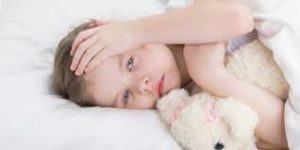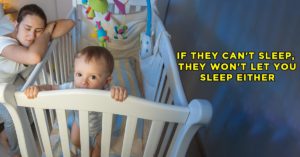A Better Understanding

Up to 80% of children with autism have at least one chronic sleep problem [Autism Speaks]. Insomnia is the biggest sleep disorder in children with autism. Children with autism suffer from insomnia almost twice as much as typically developing children. According to one study, “The spectrum of sleep disturbances [in people with autism] included 54% bedtime resistance problems, 56% insomnia, 53% parasomnias, 25% sleep disordered breathing, 45% morning arising problems, and 31% daytime sleepiness.” [NIH]
Many times, people with autism have other conditions like ADHD, anxiety or GI problems that can affect sleep. There are medical conditions, like seizures that may also disrupt sleep. Medications may also have an effect on sleep patterns.
Sleep studies of children with autism showed most of their abnormalities are related to REM sleep, or dream sleep. This leads to decreased quantity and quality of sleep. There is increased stage 1 sleep (the lightest sleep), delayed REM sleep onset, and less time spent in REM sleep [NIH]. This means a less restorative sleep overall.

There is also evidence that people with autism have trouble regulating their melatonin. Melatonin is a hormone that helps regulate our circadian rhythms, including our natural sleep/wake cycle. This disturbance in their melatonin affects children’s sleep patterns. Several studies have been done on the effects of melatonin and autism. The more abnormal melatonin concentrations are, the more severe autistic behaviors are. [NIH]
Effects of Poor Sleep

Sleep problems occur more often if the child has sensory problems, restricted and repetitive behaviors or anxiety. Sleep problems can lead to trouble paying attention, restlessness, anger, and temper tantrums. Upper respiratory problems and vision issues are associated with poor sleep quality. Increased wakefulness at night and decreased willingness to fall asleep is associated with poor appetite and growth [NIH].
Reduced sleep efficiency affects many aspects of a child’s life. In typically developing children, sleep problems can result in daytime sleepiness, learning problems and behavioral issues such as aggression, inattentiveness and hyperactivity. In children with autism, these sleep issues tend to worsen these behavioral challenges, interfere with learning, the ability to regulate emotions, and decrease the overall quality of life. They experience more severe autistic symptoms during the day as well, such as repetitive behaviors or poor social skills.
Children with autism who have sleep problems have more behavior problems and decreased adaptive skill development compared to those autistic children without sleep problems. The severity of sleep problems correlates with the severity of behavior issues. Poor sleepers exhibit more problematic behaviors than good sleepers. Lower cognitive, verbal and adaptive function is associated with difficulties falling asleep, waking up throughout the night and shorter total sleep time. The severity of sleep problems does not predict the severity of cognitive or adaptive impairment, like it does with behavior [NIH].

Children’s sleep problems affect not just the child, but the family’s sleep patterns and stress levels as well. Several studies have been done regarding this. One in five families with an ASD child reports sleep problems affect the family functioning normally. Sleep anxiety is related to a lower quality of life. Sleep disruptions increase the parenting burden and family stress, while family stress is associated with poorer sleep quality. It can be a vicious cycle of more stress and worse sleep.
So how do you combat your autistic child’s sleep problems? With healthy sleep habits. Better sleep won’t cure autism, but it can lessen the severity of symptoms. Here are some tips to improve sleep quality and the amount of sleep your child is getting.
Healthy Sleep Habits:

· Consider all five senses when creating your child’s sleep environment. This means having a quiet, cool, dark room. Keep in mind what visual stimuli are in your child’s room. Also be aware of the type of bedding, clothing or stuffed animals your child is sleeping with. Consider noise levels and smells as well. Night lights may be necessary for some kids and white noise machines or soft music can cancel out other noises throughout the house. Each child is different, so what works for one child may not work for another.
· Daytime exercise can make it easier to fall asleep at night. Don’t exercise 2-3 hours before bedtime or it can have the opposite effect. Exercise can be walking, light activities, or games like tag; it doesn’t have to be intense or at a gym. Keeping your child active will help ensure that they are tired at bedtime.
· Avoid caffeine, especially later in the day. Caffeine is a stimulant and can keep your child up at night. Caffeine is most commonly found in coffee, tea, soda, and chocolate.
· No naps, especially late in the afternoon. This disrupts your child’s natural circadian rhythms which can throw off your child’s natural sleep/wake cycle, making them wide awake at bedtime.

· Limit screen time, especially before bed. Watching TV, video games, or playing on the computer (especially if violent or scary) can lead to children with autism having more trouble sleeping. Do stimulating activities like using electronics or physical activity earlier in the evening and do relaxing activities like reading, taking a bath or singing later in the evening. Turn off electronics at least one hour before bedtime.
· A bedtime routine only needs to be a half hour or so. Keep it short and predictable. Routines help establish positive sleep patterns by teaching a child to calm down, relax and get ready to sleep. Warm baths are also calming and can help get a child calm and ready for bed. Most importantly, praise your child often for following their bedtime routine!
· A visual schedule, which is a set of pictures that shows what will happen during bedtime routine, can help out during this time. This helps the child break something with complex actions down into simple steps. For example, bedtime can be broken down into, put on pjs, go to the bathroom, wash hands, brush teeth read a book, go to bed, go to sleep. Place the images in order that you want your child to complete bed time tasks. You could use a checklist as well to convey the same information. It depends on the child.

· Melatonin can help regulate your child’s sleep habits and thus help with daytime behaviors, with very little side effects. Melatonin is effective the first week of treatment and is proven to help with quicker sleep onset, less nighttime awakenings, and longer sleep duration compared to both their own baseline measurements and placebo groups. Consult a doctor before adding supplements to your child’s routine.
· Medication adjustments may be necessary if a child is on stimulants or other medications that affect their sleep.
· A consistent sleep/wake schedule, even on the weekends, will help regulate your child’s circadian rhythms. Dimming the lights in the evening and exposing your child to natural sunlight in the morning can also help regulate circadian rhythms.
· Sleeping alone is important for not only your child, but for yourself as a caregiver. Teach your child to fall asleep alone. A ‘bedtime pass’ can be used to help teach a child to stay in bed. Use a bedtime pass that may be exchanged for one free trip out of bed or one parent visit after bedtime. If the child does not use the card in the middle of the night, they can exchange it for a special reward (and praise) in the morning. If the child gets out of bed after the pass is exchanged take the child back to bed with as little attention as possible.

Additional Resources:
The National Institute of Health has some technical information and statistics about sleep disorders, melatonin and autism here and here. Autism Speaks has parent guides and information about healthy sleep habits.
Interested in services? Visit our website to submit a service inquiry form here. Let us know what topics you would like to learn more about: office@abainsight.net
